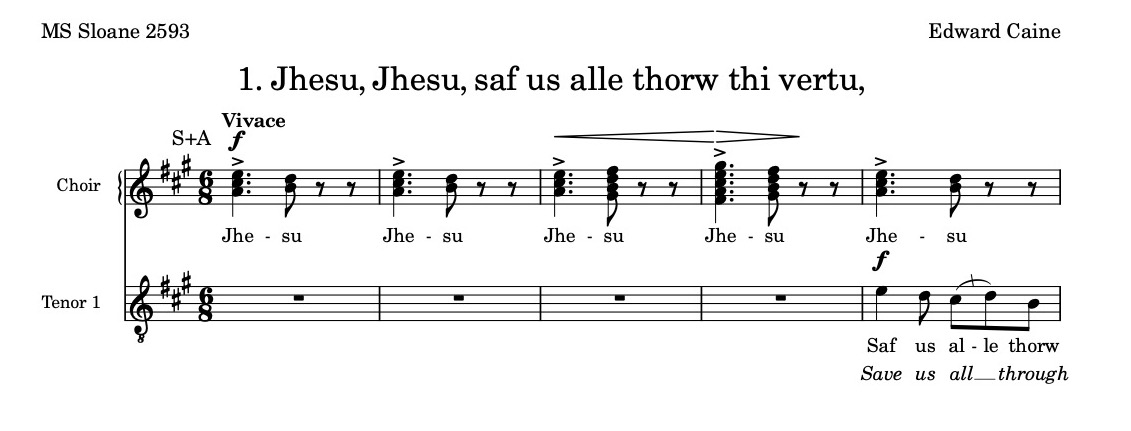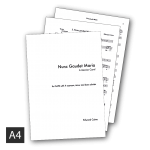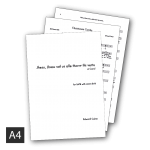Jhesu, Jhesu, Saw us alle thorw [sic] thy vertu was written in the winter of 2020 under national lockdown. I had two rare daytimes when I could focus on composing, and fancied working on some more Sloane MS 2593 texts. It is as yet unperformed.
The Source
I’m always on the lookout for interesting texts and I’m not sure why but I’m drawn to ancient, medieval and middle-english texts.
I came across this particular collection of carols on the Internet Archive . The cover reads “Songs and Carols from a Manuscript in the British Museum of the fifteenth century”. It is a transcription of items from a collection which now resides in the British Library, Sloan MS 2593 . It is an early source for some rare and important texts including “adam lay ibownden” and “I have a gentil cock” (snigger).
It is a collection into which I dip regularly for inspiration and there are some really interesting texts. I should take this point to thank Janet Walker, who helped me with the translation, having studied middle and ancient English at Exeter University.
I chose Jhesu Jhesu saf us alle thorw[sic] thy virtue, as ever because I could imagine how I would start. Here I have to acknowledge an influence: Benjamin Britten’s Ceremony of Carols. In my head I heard this repeated “Jhesu, Jhesu” being repeated by the women in an A major chord contracting to a B-D.

This is essentially the opening to Britten’s Wolcum Yule and if you listen to it (video below) you’ll hear more devices which I’ve essentially copied, although not cynically – I just like the ideas and heard them that way. It causes me chagrin when I hear something and realises it’s someone elses thing – it’s not a deliberate attempt to copy Britten, I just can’t think of another way to set the text, and thought this would be fun.
While we talk about Britten, we can talk about the harmonic structure of the piece – These chords are a frequent device Britten uses. They are based on the tones of a squeezebox, melodian or early accordian. If you play a traditional non-chromatic harmonica you’ll notice these chords as you breath in and out – this allows you to go up and down the scale by breathing in and out alternatively and directing the flow of air over the tone generator. This is the same structure as inside these early accordians. The result is depending on which buttons you hold down and the direction of air going through it, you can create a progression of thirds.
Another example of a Britten work that references this type of harmony is the wonderful Ballad of the Green Broom from Five Flower Songs op. 47:
This is particularly useful in this setting as to me the thirds evoke a rustic early setting and a peasant dance. It also gives me a convenient “escape” from traditional germanic harmony, something I enjoy doing to keep the language fresh. The men however follow an A major diatonic mode. The melody I thought of reminds me of a heroic, superman motif.

Of course, once I’ve set up a good context and repetative motif, the very first thing I want to do is tear it down, and that’s what I do, switching to the distant key of C# minor for the bulk middle section (and in fact opening in Dorian mode in B major). Again I’m thinking of a peasant dance.

The women in the choir continue to use the squeezebox paradigm, this time moving up and down the mode, modulating as they do up a third to the relative major.

In the third verse I need to acknowledge another influence in American folk musics and the “Sacred Harp” shape-note singing tradition. This lusty fifths-based harmony is joyous and I enjoy referencing it when I want the choir to express jubilation. Another feature is that the melody is often in the tenor and surrounded by higher harmonies

Of course, I needed to return to A major to conclude, and i do so with no transition. “grant us grace” gives me leave to snap into A major, and I re-establish the key by having a play on our squeezebox and a little virtuosity for the singers.

This piece is aimed at a high quality choir with a skilled director and singers. It is a difficult sing, but I think it would be very fun to perform.


